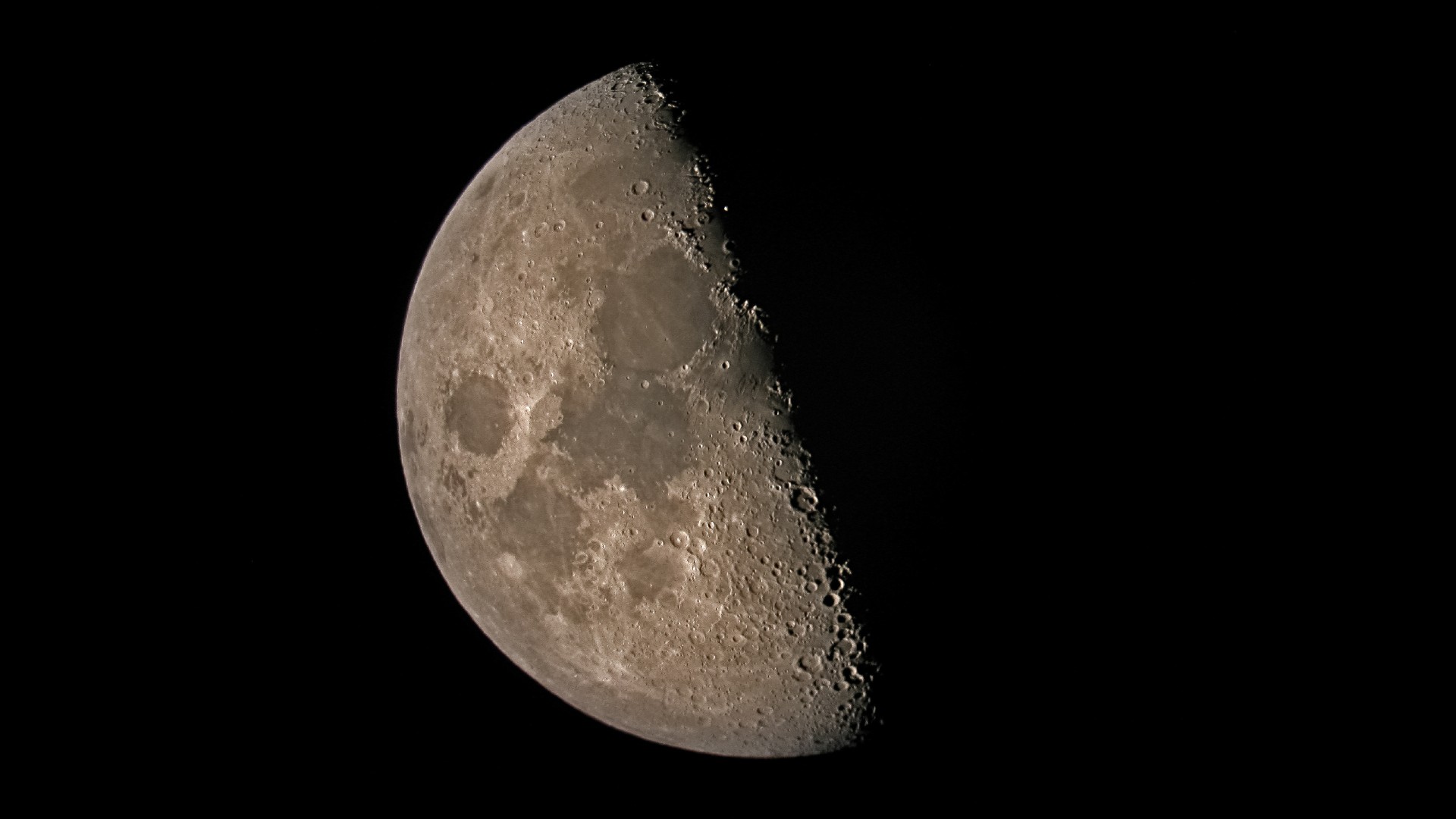Don't miss the half-lit moon during its third quarter phase today
The moon will be halfway between the fully illuminated Flower Moon and May's completely dark new moon.

The moon's face will be half-illuminated during the early hours of Friday (May 12) as it reaches its third quarter phase. The third quarter moon, or final quarter moon as it is alternatively known, will be visible globally around dawn.
This phase comes exactly midway between the completely illuminated phase, the full moon, and the completely dark new moon, the latter of which also signals the start of a new lunar cycle.
From New York City the moon will rise at 2:23 a.m. EDT (0623 GMT) on Friday, according to In the Sky, and will be visible through sunrise and until just before it sets at around 12:11 p.m. EDT (1611 GMT).
The last full moon, May's Flower Moon, occurred on May 5. Since then, the illuminated face of the moon has been withdrawing or "waning." After its half-illuminated third quarter phase today, the light will continue to wane until the moon is completely dark on Friday (May 19). This will mark the start of a new 29.5-day lunar cycle.
Related: What is the moon phase today? Lunar phases 2023

Looking for a telescope to see the features of the third quarter moon up close? We recommend the Celestron Astro Fi 102 as the top pick in our best beginner's telescope guide.
The waning illumination of the moon isn't the only change it has been undergoing as the full moon gives way to the new moon. It has also been rising and setting an hour later each subsequent night and day. During the full moon phase, the moon rose at around sunset and set around sunrise, remaining visible throughout the night.
By the time the new moon arrives though, the moon will rise and set at around the same time as the sun, meaning that it is visible for most of the day but is absent from the night sky.
Get the Space.com Newsletter
Breaking space news, the latest updates on rocket launches, skywatching events and more!
After the new moon, the illuminated lunar face will once again grow as seen from Earth with the moon described as waxing. It will also begin rising and setting an hour later each day. Before it gets halfway through its cycle and reaches the next full moon, the moon will pass through another half-illuminated phase known as the first quarter moon.
This phase is in many ways the opposite of the last quarter phase. Not only will the moon rise around midday day and set around midnight, but the opposite side of its face will be illuminated. Which side of the moon a skywatcher sees during both the first and third quarter phases depends on which hemisphere of the planet they observe it from.
If you are hoping to catch an up-close look at the third quarter moon, our guides to the best telescopes and best binoculars are a great place to start.
If you're looking to snap photos of the night sky in general, check out our guide on how to photograph the moon, as well as our best cameras for astrophotography and best lenses for astrophotography.
Editor's Note: If you get a great picture of the third quarter moon and would like to share it with Space.com's readers, send your photo(s), comments, and your name and location to spacephotos@space.com.
Join our Space Forums to keep talking space on the latest missions, night sky and more! And if you have a news tip, correction or comment, let us know at: community@space.com.

Robert Lea is a science journalist in the U.K. whose articles have been published in Physics World, New Scientist, Astronomy Magazine, All About Space, Newsweek and ZME Science. He also writes about science communication for Elsevier and the European Journal of Physics. Rob holds a bachelor of science degree in physics and astronomy from the U.K.’s Open University. Follow him on Twitter @sciencef1rst.









